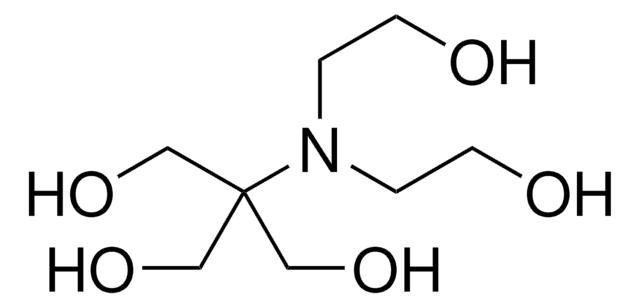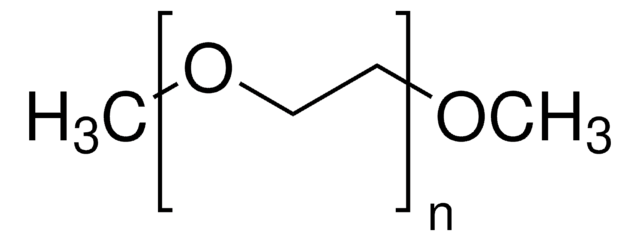14844
BICINE 30% PEG 600 solution
0.1 M, pH 9.0±0.2 ( in neat)
Synonym(s):
BICINE, PEG Grid Screening Solution 24/Kit-No 36436, N,N-Bis(2-hydroxyethyl)glycine
About This Item
Recommended Products
form
liquid
concentration
0.1 M
pH
9.0±0.2 ( in neat)
useful pH range
7.6-9.0
pKa (25 °C)
8.3
density
1.06 g/mL at 20 °C
storage temp.
2-8°C
SMILES string
OCCN(CCO)CC(O)=O
InChI
1S/C6H13NO4/c8-3-1-7(2-4-9)5-6(10)11/h8-9H,1-5H2,(H,10,11)
InChI key
FSVCELGFZIQNCK-UHFFFAOYSA-N
Looking for similar products? Visit Product Comparison Guide
Application
Legal Information
Storage Class Code
10 - Combustible liquids
WGK
WGK 1
Flash Point(F)
Not applicable
Flash Point(C)
Not applicable
Personal Protective Equipment
Certificates of Analysis (COA)
Search for Certificates of Analysis (COA) by entering the products Lot/Batch Number. Lot and Batch Numbers can be found on a product’s label following the words ‘Lot’ or ‘Batch’.
Already Own This Product?
Find documentation for the products that you have recently purchased in the Document Library.
Our team of scientists has experience in all areas of research including Life Science, Material Science, Chemical Synthesis, Chromatography, Analytical and many others.
Contact Technical Service







